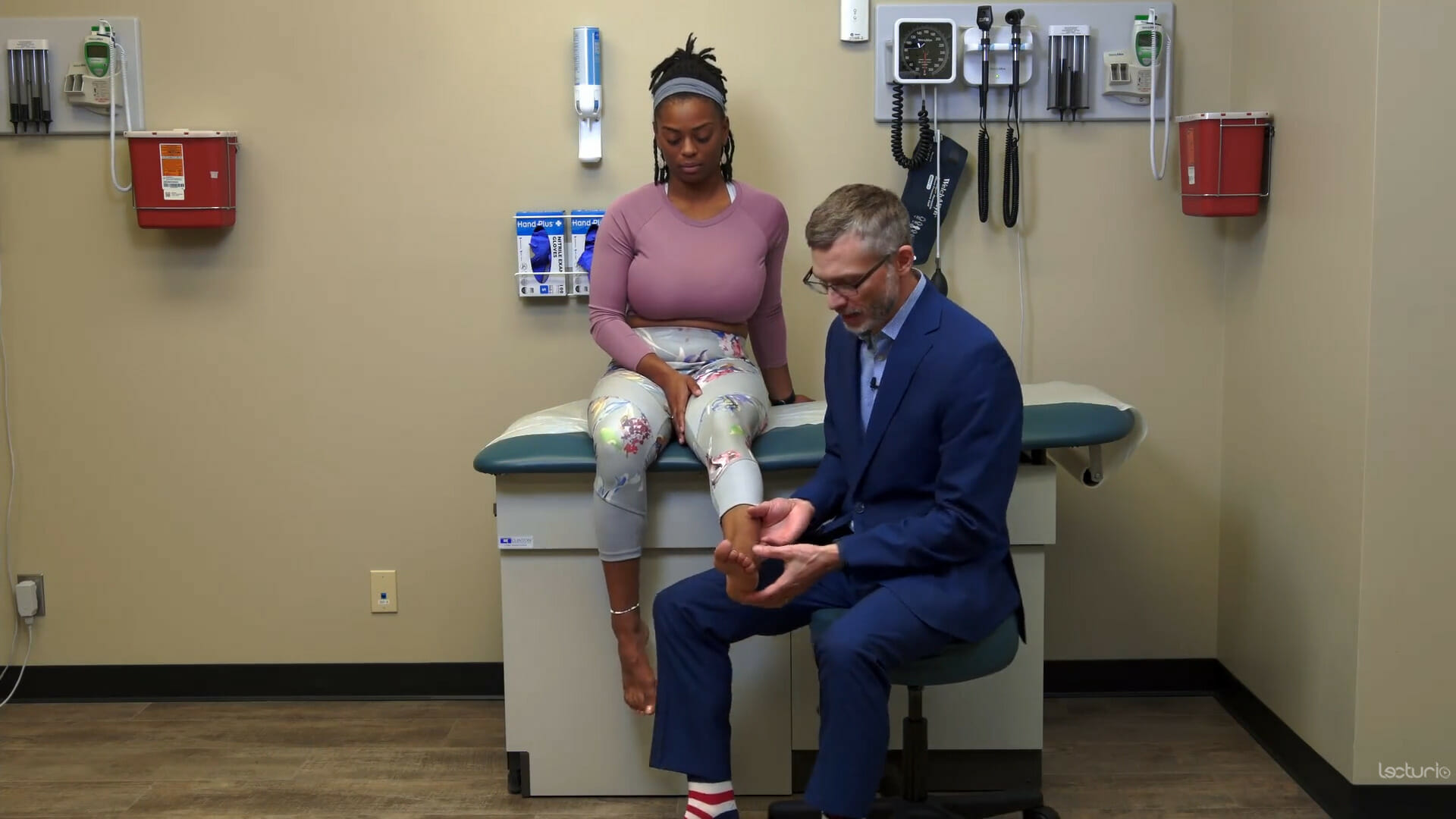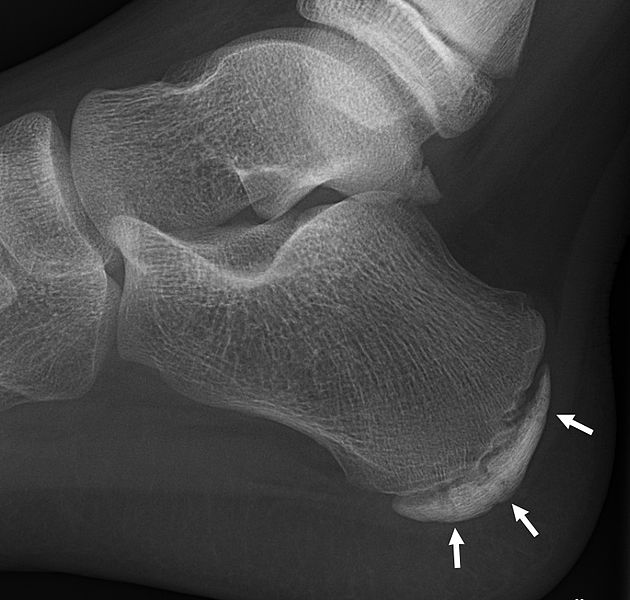Playlist
Show Playlist
Hide Playlist
Patient Introduction and Review of Foot and Ankle Anatomy
-
Slides Physical Exam Foot Ankle Pain Introduction.pdf
-
Reference List Physical Examination.pdf
-
Download Lecture Overview
00:01 So let's look at a patient with acute ankle pain. 00:04 A 22-year-old college basketball player presents after injuring his ankle during practice. 00:09 After going up for a rebound, he landed on a teammate's shoe, causing him to roll his ankle. 00:14 And now he's been unable to bear weight on the ankle since the injury. 00:18 So we have to come up with good physical exam skills to help to tease apart what could potentially be going on with this patient. 00:24 It's important to remember some basic anatomy. 00:27 On the lateral side of the ankle, we're thinking about the lateral malleolus. 00:31 And importantly, it's the certain ligaments, particularly the interior talofibular ligament indicated here that is the most commonly sprained ligament in the ankle. 00:43 although there are a variety of other ligaments and we'll work through them when we move on with our physical exam content. 00:48 Looking at the medial side of the ankle, we have a few more important structures there, including the medial malleolus and then several structures that are running just posterior and inferior to it, including your posterior tibial tendon, your posterior tibial nerve, etcetera. 01:05 So we're going to have to look in that area in particular and within the tarsal tunnel. 01:11 In terms of causes of ankle pain, we have traumatic, we have overuse causes and then inflammatory causes and we'll go through a few examples of each. 01:20 Traumatic, just like in the patient we're talking about now, perhaps he just sprained his ankle. 01:25 And when we're thinking about sprains, the physical exam can help us to tease apart. 01:28 if this is just a grade I type of sprain, which represents micro tears to the ligament, something more like a moderate tear or grade II. 01:37 And then grade III is a complete tear of that ligament. 01:41 And you can imagine that with a complete tear, you'll have a lot of laxity around the joint when you move it around. 01:46 In contrast, even potentially the patient had more than just a sprain and they may have, in fact, had a fracture and we'll want to have some good exam skills to help tease apart if a fracture's occurred or not. 01:58 Also, remember, on the back of the heel where the calcaneus is, the Achilles tendon is going to insert into that area, and we want to make sure that we can also identify quickly at the bedside an Achilles tendon rupture. 02:10 Thinking about overuse injuries, some of the more common ones that can appear in the foot are plantar fasciitis, classically characterized by pain with the first step you take when you get out of bed and stretch that very inflamed plantar fascia or tarsal tunnel syndrome, which I was alluding to before with a burning paresthesia type pain that's coming along the medial side of the ankle and going towards the sole of the foot. 02:37 Thinking about inflammatory or degenerative causes of pain, we, of course, can have gout classically in the first metatarsophalangeal joints known as podagra, and this should be a very hot, swollen, painful joint that should be not too difficult to identify. 02:53 And then just osteoarthritis, which can manifest, particularly also in the first MTP, as well as just around the ankle joint itself. 03:03 So it's going to be important that we keep all of these different diagnoses in mind as we move on to our physical exam to help to characterize what exactly is going on with our young 22-year-old college basketball player.
About the Lecture
The lecture Patient Introduction and Review of Foot and Ankle Anatomy by Stephen Holt, MD, MS is from the course Examination of the Lower Extremities.
Included Quiz Questions
What is the most common structure associated with ankle sprains?
- Anterior talofibular ligament
- Calcaneofibular ligament
- Tarsal tunnel ligament
- Peroneal tendon
- Achilles tendon
What is one of the causes of medial ankle pain from overuse?
- Tarsal tunnel syndrome
- Carpal tunnel syndrome
- Achilles tendon rupture
- Anterior talofibular ligament sprain
- Gout
Customer reviews
5,0 of 5 stars
| 5 Stars |
|
5 |
| 4 Stars |
|
0 |
| 3 Stars |
|
0 |
| 2 Stars |
|
0 |
| 1 Star |
|
0 |





